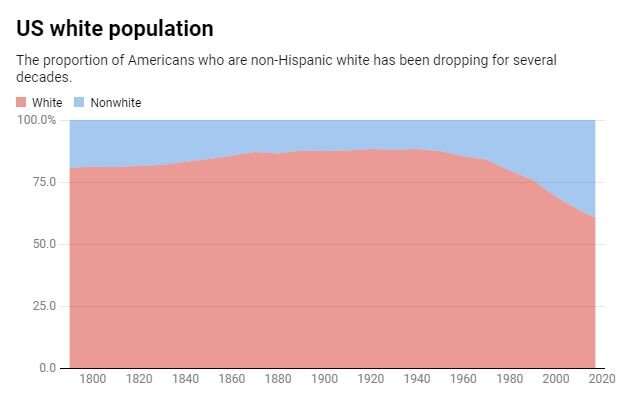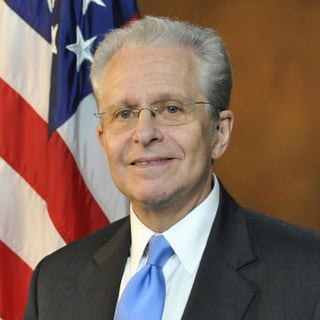
Credit: The Conversation
Dear Commons Community,
The Hill had an article yesterday examining changes in race among the American population. While many are projecting that the white majority population is aging out and our country will become a majority-minority population, some experts are questioning whether this will happen anytime soon. Below is an analysis.
Tony
——————————————————————-
Generation Z will be the last generation of Americans with a white majority, according to census data. The nation’s so-called majority minority arrived with Generation Alpha, those born since about 2010.
Barely two decades from now, around 2045, non-Hispanic white people will fall below half as a share of the overall U.S. population.
Those conclusions, and the numbers behind them, seem simple enough. Yet, some scholars contend that the numbers are wrong, or at least misleading, and that the looming ascent of a majority-minority America is a myth.
America’s white majority, and its numbered days, is a lightning-rod topic, given the nation’s history of slavery and enduring patterns of discrimination against minorities and immigrants.
Demographers and economists celebrate the nation’s growing diversity as vital to a prosperous future. Other voices vilify racial change as a threat to the nation’s white heritage.
“Race is the most complicated variable in the census, and it’s the one that draws people like moths to the flame,” said Dowell Myers, a professor of policy, planning and demography at the University of Southern California.
Generational data from the 2020 census shows the upward march of racial diversity by age group. Non-Hispanic white people make up 77 percent of the over age 75 population, 67 percent of the age 55-64 population, 55 percent of the 35-44 cohort, and barely half of the 18-24 age group. America’s children are only 47 percent non-Hispanic white, according to an analysis released this week by William Frey, a senior fellow at the Brookings Institution.
In the decades to come, that wave of diversity will wash across the generations, yielding an America with no single racial group that can claim a numerical majority.
By 2045, according to census projections, non-Hispanic white people will fall below 50 percent as a share of the American population. By 2050, non-Hispanic white people will represent less than 40 percent of the under-18 population.
Demographers warn, however, that those milestones vastly oversimplify the story of a diversifying America.
For a start, millions of Americans no longer embrace a single racial identity. How many? It’s hard to tell.
Getting back to those census projections: By 2045, more than 18 million people will claim two or more races. Subtract them from the total, and the population of non-Hispanic white people leaps from 49 percent to 52 percent of the remaining population, their majority status restored.
“Whites are going to be the largest group in this country for a long time,” said Richard Alba, distinguished professor emeritus in sociology at the City University of New York.
“In a sense, we’re forming a new kind of mainstream society here, which is going to be very diverse. But whites are going to be a big part of that. It’s not like they’re going to disappear and be supplanted.”
Alba argues that the census itself is “locked into a way of thinking that dates to the 20th century, and that’s the idea that people are only one thing when it comes to ethnicity and race.”
It makes sense: Back in 1980, non-Hispanic white people made up about 80 percent of the American population. Black and Hispanic people, Asian Americans and others split the remaining 20 percent. They were the statistical minority, and demographers used that term to describe them.
Today, multiracial Americans are the fastest-growing racial category in the census, a group projected to double in size between 2020 and 2050.
Alba and others said they believe even that number is a dramatic undercount.
People of mixed race “have relatively fluid identities,” Alba said. “They can think of themselves as white, they can think of themselves as minority, or they can think of themselves as mixed.”
Consider an American with three grandparents who are non-Hispanic white people, and one who is Black, Hispanic or Asian. Simple math suggests labeling that person as white. But long-standing American tradition might favor a “minority” identity.
The practice of labeling mixed-race Americans as minorities dates to the 1600s and the racist “one-drop” rule, which held that a person with any Black ancestry should be counted as Black.
The nation engaged in racial reductivism as recently as 2008, scholars say, when America unblinkingly identified its new mixed-race president as Black.
Demographers point to other curiosities in how the census handles race. The agency counts people of Middle Eastern or North African descent as white, even though many of them do not see themselves as white. Americans from nearby Afghanistan and Pakistan, meanwhile, are termed Asian.
Writing in The Atlantic in 2021, Alba, Myers and Morris Levy reasoned that the “myth” of a coming majority-minority America was both false and divisive.
“In the minds of many Americans,” they wrote, “this ethno-racial transition betokens political, cultural, and social upheaval, because a white majority has dominated the nation since its founding.”
White nationalists have seized on “replacement theory,” which holds that liberal elites are promoting immigration and interracial marriage to “replace” non-Hispanic white people with people of color, all to disempower whites.
When white supremacists marched through Charlottesville, Va., in 2017, some of them chanted, “You will not replace us.”
Outside the racist fringe, the researchers say, most white Americans are receptive to the idea of expanding mixed-race families and a growing multiracial population.
“Despite what many people say, segregation has weakened,” Alba said. He notes that the average white American now lives in a neighborhood where roughly 1 in 3 residents identifies as a race other than white.
In any case, demographers say, America will need a diverse population if it is to prosper in the decades to come.
The nation’s median age is 38.9, the highest it has ever been. Median age is rising because the national birthrate is falling. These trends threaten to deplete the American workforce: Fewer workers means less growth.
For America’s economic growth to persist, demographers say, the nation needs a steady stream of immigrants. New arrivals, especially from Latin America, keep the nation young. The median age for non-Hispanic white people is 43, according to census data. For Hispanic people, it is 31.
“Immigration is a good thing for America,” said Frey, the Brookings researcher. “You’re going to want a country that’s growing and robust and has a lot of energy and people who will contribute to Social Security and Medicare. And you can’t just count on whites for that.”
Frey and other researchers hope future censuses will do a better job of capturing the full depth of multiracial America.
Starting in 2000, the census allowed respondents to choose more than one race. A separate question asks about Hispanic origin, yielding separate and somewhat confusing data sets.
Frey favors a new set of categories, starting with the 2030 census. The separate “Hispanic” question would be cut. Instead, respondents could check any of several “origin” categories, and they could write in any number of specific racial or ethnic identities, such as Lebanese, Guatemalan, Nigerian or Navajo.
Such an exercise might yield a richer understanding of ethnicity and race in America. Then, perhaps, the “majority-minority” conversation would fade away.
“We should plan ahead,” Frey said, “because this is our future.”











